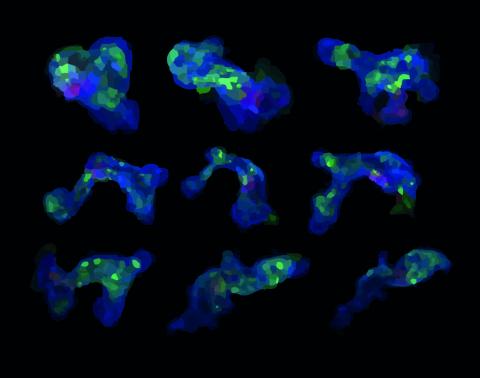Supervisor: Milka Sarris
Dynamics of neutrophil inflammatory responses during tissue damage
Inflammation is a physiological response to injury or harmful agents that ensures tissue defence. The development of inflammation has pervasive implications in human disease, ranging from autoimmunity to cancercells1,2. Neutrophils are the most abundant leukocyte population in the blood and the first cells to be recruited to sites of damage or infection, where they promote innate immunity through phagocytosis, release of antimicrobial products and production of various signals for other cells1,2. However, excess or prolonged neutrophil gathering can cause direct collateral tissue damage through production of oxygen radicals or release of proteolytic enzymes1. Thus, tuning neutrophil accumulation to desirable levels (that balance the benefit of host defence with the detriment of excess inflammation) is an important, unmet biomedical target.
Upon entry into a damaged tissue, neutrophils migrate directionally (chemotaxis) towards the focus of damage by sensing gradients of inflammatory chemoattractants. Thereafter, a key checkpoint for these cells is whether to recruit more neutrophils at the inflammatory locus. Recent work from our group has revealed that pioneer neutrophils clustering at the wound core exhibit prominent, sustained calcium fluxes which are propagated across the growing neutrophil cluster in a contact-dependent manner3. These specialised calcium fluxes are required for coordinated synthesis of chemoattractants and effective recruitment of new neutrophils to the site. However, it is unclear how these signals are terminated to cease neutrophil infiltration.
To investigate this, we will use live zebrafish embryos, which are transparent and thus ideal for monitoring and manipulating neutrophil migration behaviour and dynamics. We will use our established transgenic lines and cutting-edge live microscopy set-ups to visualise neutrophil calcium dynamics in response to acute laser damage in vivo. We will then manipulate candidate pathways that may regulate this process through CRISPR/Cas9-mediated gene silencing and drug inhibition experiments. Altogether, this project will elucidate molecular mechanisms that are important in regulating neutrophil migration to sites of tissue damage.
Relevant references:
1. Kolaczkowska, E. & Kubes, P. Neutrophil recruitment and function in health and inflammation. Nat. Rev. Immunol. 13, 159–175 (2013).
2. Singel, K. L. & Segal, B. H. Neutrophils in the tumor microenvironment: trying to heal the wound that cannot heal. Immunol. Rev. 273, 329–343 (2016).
3. Poplimont H., Georgantzoglou A., Boulch M., Coombs C., Papaleonidopoulou F., Sarris M. Neutrophil swarming in damaged tissue is orchestrated by connexin-dependent calcium signals. bioRxiv, doi: https://doi.org/10.1101/853093


